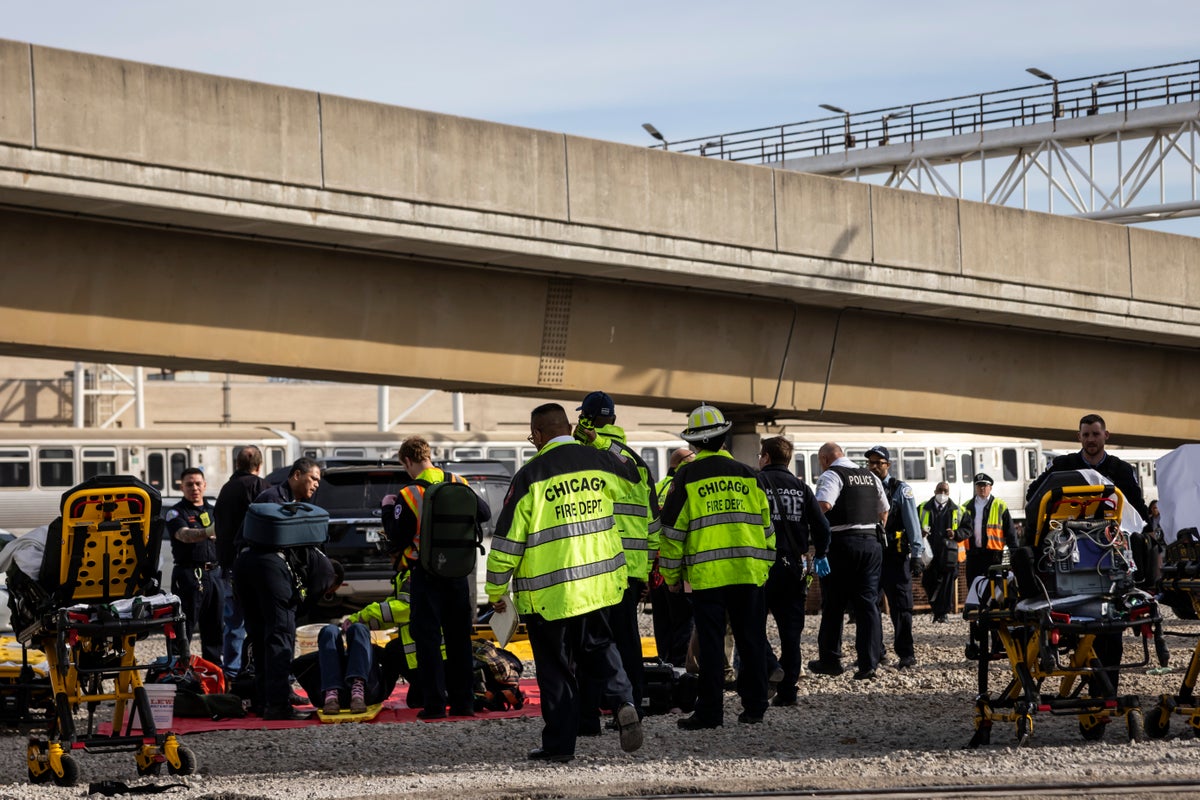
The operator of a Chicago commuter train that collided with snow-removal equipment last month knew the machine would be on the line that day but wasn't aware of its exact location, according to a preliminary report from the National Transportation Safety Board released Tuesday.
The federal review found the operator immediately braked once the equipment came into view. Investigators said they are focused on the design of the CTA signal system, the braking performance of the railcars involved in the accident, and whether leaf debris or other contaminants on the rails played a role in the accident.
The Nov. 16 crash caused the Chicago Transit Authority, or CTA, Yellow Line train to derail. Six CTA employees were on board the rail equipment. Sixteen people were taken to a hospital, treated and released, and three were critically injured. No one died.
According to the report, the train was traveling south at about 54 mph (87 kilometers per hour) when the operator received a stop command from the signal system because of the equipment about 2,150 feet (655 meters) ahead.
“The operator immediately initiated a full service braking application to stop the train,” the report says. “The operator then saw the snow removal machine and initiated an emergency braking application.”
The signal system at the accident site is designed to allow a stopping distance of 1,780 feet (543 meters) or less — shorter than the distance between the train and the equipment when the operator hit the brakes — but instead of stopping, the train decelerated to about 27 mph (43 kph), striking the equipment.
The NTSB investigation is ongoing.







